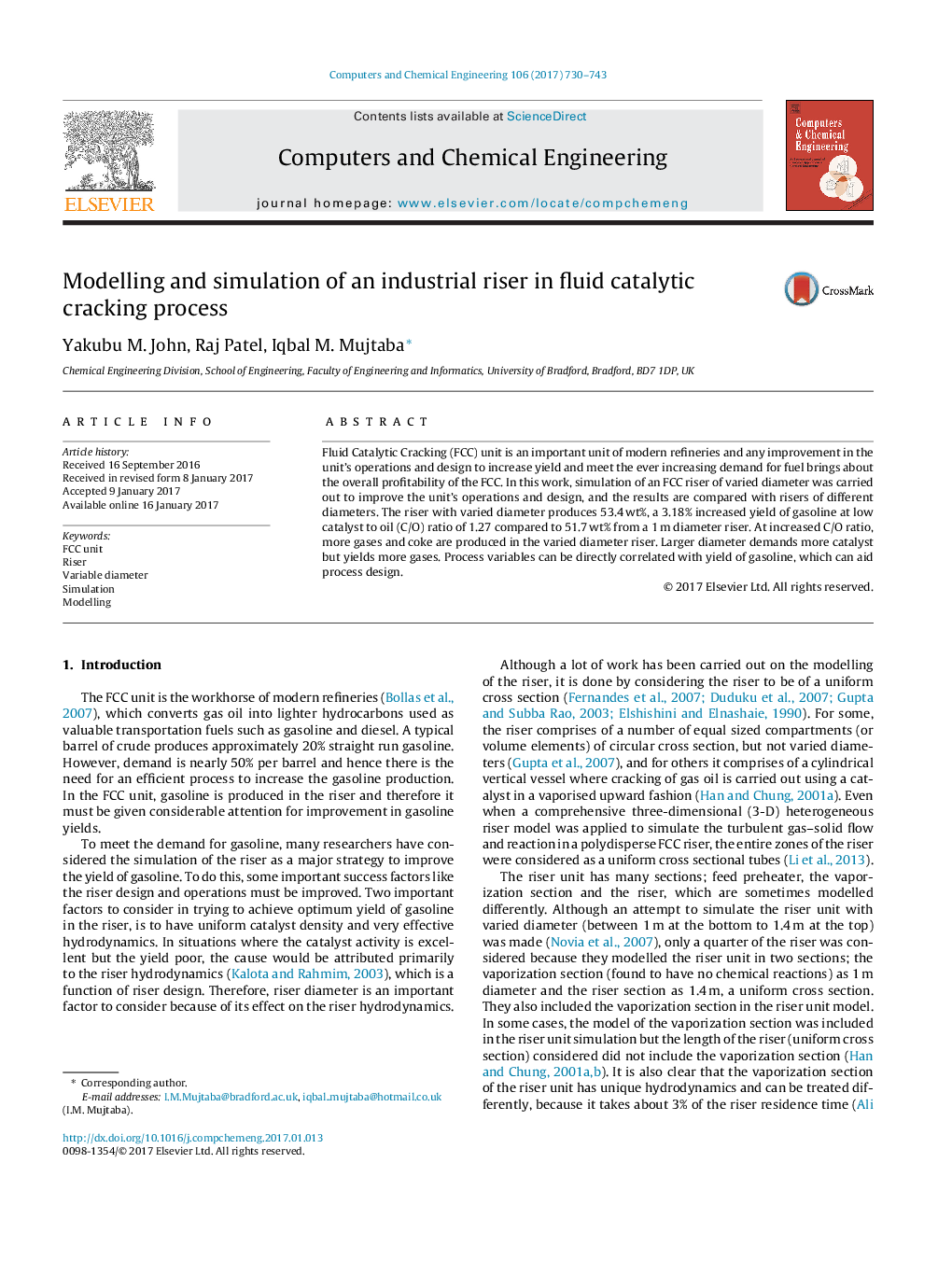| Article ID | Journal | Published Year | Pages | File Type |
|---|---|---|---|---|
| 6469126 | Computers & Chemical Engineering | 2017 | 14 Pages |
â¢Mathematical model of industrial FCC risers is developed.â¢Catalyst to oil ratio is varied to achieve the best gasoline yield.â¢Catalyst inlet temperature affects the feed conversion.â¢Simulation of industrial riser is carried out and validated with plant data.
Fluid Catalytic Cracking (FCC) unit is an important unit of modern refineries and any improvement in the unit's operations and design to increase yield and meet the ever increasing demand for fuel brings about the overall profitability of the FCC. In this work, simulation of an FCC riser of varied diameter was carried out to improve the unit's operations and design, and the results are compared with risers of different diameters. The riser with varied diameter produces 53.4Â wt%, a 3.18% increased yield of gasoline at low catalyst to oil (C/O) ratio of 1.27 compared to 51.7Â wt% from a 1Â m diameter riser. At increased C/O ratio, more gases and coke are produced in the varied diameter riser. Larger diameter demands more catalyst but yields more gases. Process variables can be directly correlated with yield of gasoline, which can aid process design.
